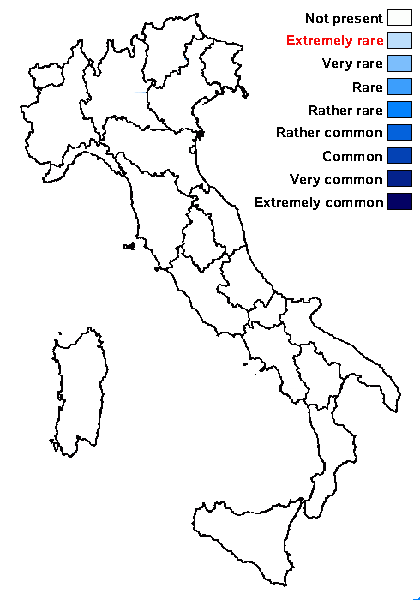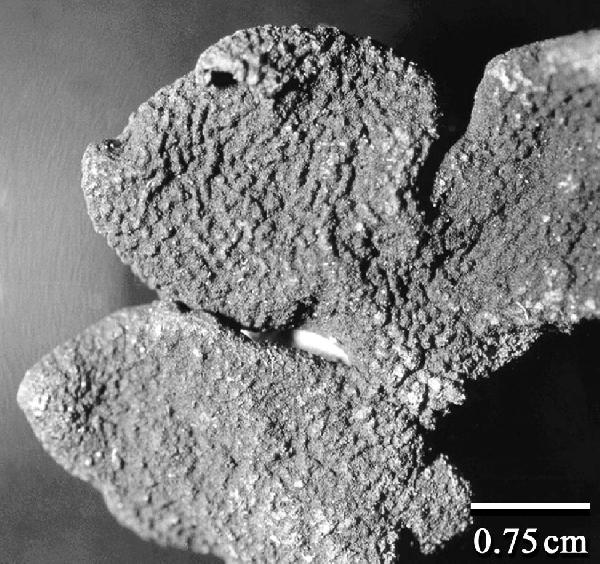Thyrea pachyphylla (Müll. Arg.) Henssen
in Henssen & Jørgensen, Lichenologist, 22: 146, 1990.. Basionym: Omphalaria pulvinata var. pachyphylla Müll. Arg. - Bull. Murith. Soc. Valais. Sci. Nat., 10: 55, 1881.
Synonyms:
Distribution:
Description: Thallus squamulose-umbilicate, attached by a central holdfast, monophyllous or divided into 2-6 broadly rounded, 2-5 mm wide, up to 15 mm long, 0.5-1 mm thick, flat lobes with downturned margins, dull black, epruinose, the surface distinctly warty-papillose and appearing reticulate, the warts 0.1-0.2 mm wide and 0.1-0.15 mm high. Apothecia rare, small, laminal, immersed, with a punctiform disc and a persisting thalline margin, originating from from ascogonia beneath pycnidia (pycnoascocarps). Proper exciple thin, hyaline; epithecium poorly differentiated, brownish; hymenium and hypothecium colourless. Asci 8-spored, prototunicate, cylindrical-clavate, thin-walled, with an external, I+ blue cap. Ascospores 1-celled, hyaline, globose or broadly ellipsoid, 8-12 x 6-8 µm, thin-walled. Pycnidia laminal, immersed, globose, 0.1-0.15 mm across. Conidia ellipsoid, 2-3 x 1-1.5 µm. Photobiont cyanobacterial, chroococcoid, the cells surrounded by a brownish gelatinous sheath. Spot test: all negative. Chemistry: without lichen substances. Note: a species described from the Western Alps (Switzerland), and also known from SW Europe, NW Africa and N America, growing on vertical faces of limestone and along seepage tracks, apparently mainly montane. To be looked for in Italy.
Growth form: Squamulose
Substrata: rocks
Photobiont: cyanobacteria, coccaceous (e.g. Gloeocapsa)
Reproductive strategy: mainly sexual
On otherwise dry surfaces with short periods of water seepage after rain

Predictive model
Growth form: Squamulose
Substrata: rocks
Photobiont: cyanobacteria, coccaceous (e.g. Gloeocapsa)
Reproductive strategy: mainly sexual
On otherwise dry surfaces with short periods of water seepage after rain

Predictive model


